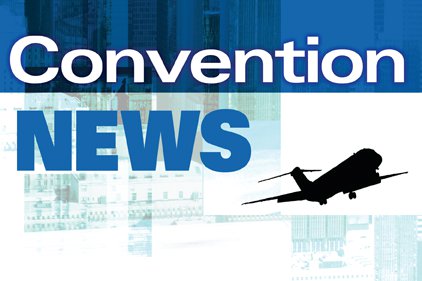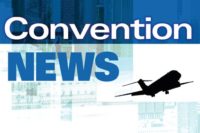 ● 1 ● Paul O’Neill would be voted in as OSHA chief by safety pros in a heartbeat. Or they would like to clone him for every boardroom meeting on safety. He is an inspiration to professionals, with his straight talking passion for safety.
● 1 ● Paul O’Neill would be voted in as OSHA chief by safety pros in a heartbeat. Or they would like to clone him for every boardroom meeting on safety. He is an inspiration to professionals, with his straight talking passion for safety.
● 2 ● It’s 2013 and you'd best be using a smartphone. With at least one new safety app seemingly hatched every day, the smartphone is going to be an essential tool for pros.
● 3 ● Scott Geller and Charlie Morecraft working as a team of keynoters continue to be as unique in safety as Paul O’Neill is. As much as Scott and Charlie travel and give talks, and for the many years they’ve been at it, it’s amazing how many people have never seen either one. “I was floored by Charlie Morecraft’s personal story of almost being burned alive, and the toll it took on his family,” said a young Canadian from Toronto who saw them for the first time in Chicago last week.
● 4 ● Safety pros seem to have retired their ties. Same goes for vendors, even CEOs of exhibiting companies who were Chicago. The rise in job stress requires loose collars.
● 5 ● Safety training for the ever-increasing ranks of temps and part-timers will be critical. Most companies are not hiring full-timers. More than half of the new hires in September that pushed down the national unemployment rate were part-timers.
● 6 ● Contractor safety, always a bedeviling issue for safety pros, will only become more of an issue as many companies source out work to contractors instead of adding to payroll.
● 7 ● “Drop zone”has entered the safety lexicon. It’s about preventing harm to employees from dropped tools by workers off the ground, or working on floors above vulnerable employees.
● 8 ● “Work at height” is another term gaining popularity, substituting for fall protection. Work at height covers a variety of hazards and safety issues. Fall protection is usually associated with PPE.
● 9 ● Green safety products are slooowly making their way into the safety marketplace. You have a hard hat made from Brazilian sugar cane, which can be replenished very quickly, unlike trees. You also biodegradable gloves and PVC-free earplugs and disposable respirators. But vendors say very few safety pros come to them asking about sustainable PPE, reducing carbon footprints, and recycling. With green products priced 20-25% higher according to one vendor, substantial demand just may never arrive.
● 10 ● GHS, which was plastered all over the expo floor, replacing BBS as safety’s most common acronym, is going to create a mountain of OSHA citations. One safety specialist with contacts across the country said more than 50% of firms have not trained their employees on GHS, and the OSHA deadline for completing training is around the corner in December.
● 11 ● Two of the most common questions safety vendors hear from customers: “What am I missing?” And “What do I need to know?”
● 12 ● Safety product sales reps increasingly act as semi-consultants, answering the above questions. The CEO for a large PPE company said this is the way it works: The rep must be comfortable enough to start a conversation about needs with a customer and smart enough to know when to stop the conversation and bring in a safety subject matter expert.
● 13 ● “Thought Leadership” is a buzz with both safety pros and vendors. Can you imagine “thought leadership” gaining any traction back in the 1970s and 80s when it was all about OSHA compliance? Now vendors want to be known as thought leaders in safety, authorities with credible knowledge to share with customers. Safety pros want to position themselves as thought leaders in their company cultures.
● 14 ● Check out the number of safety vendor websites with white papers that can be downloaded. Possessing a library of white papers is emblematic of thought leadership.
● 15 ● Safety pros are spending more time watching the Weather Channel. Emergency preparedness for wicked weather – floods, earthquakes, blizzards, blistering temperatures, hurricanes, etc. is becoming more and more of a critical safety issue.
● 16 ● Wouldn’t it be great if we all worked in the oil and gas industry? Safety vendors are in love with the booming industry and its demand for all sorts of safety products and training. Construction, long a staple of safety product demand, is still in the dumps, according to several vendors at the expo.
● 17 ● Has agility training caught on in your workplace? Some pros are using it with the aging workforce in mind. Stretching and flexibility are important, too.
● 18 ● “Risk” is being talked about more and more in safety circles. Not risk insurance. But risk in terms of hazards, potential for injury, and acceptable and unacceptable risk-taking by employees. Some safety pros believe “risk” resonates in the executive-sphere more than “safety.” Execs have studied risk. They get the concept. Execs hardly ever study safety.
● 19 ● Learn more about emotional intelligence if you already haven’t discovered Daniel Goleman’s books. It easily translates to safety work. EI requires self-awareness, self-management, social awareness, relationship management, and thanks to globalization, sensitivity to cultural differences. Don’t all safety pros want their employees to be aware of risks, and capable of managing their own safety? For safety pros themselves, the skills of social awareness – what’s going on in your company’s culture, managing relationships, and being sensitive not only to cultural difference but sensitive in general in terms of reading body language and being able to read between the lines, will be expected of top professionals in the years to come.
● 20 ● Want to calm down? “Never compare, never judge,” said Alaa Zidan, a health and safety consultant in Bahrain who gave the presentation on emotional intell.







